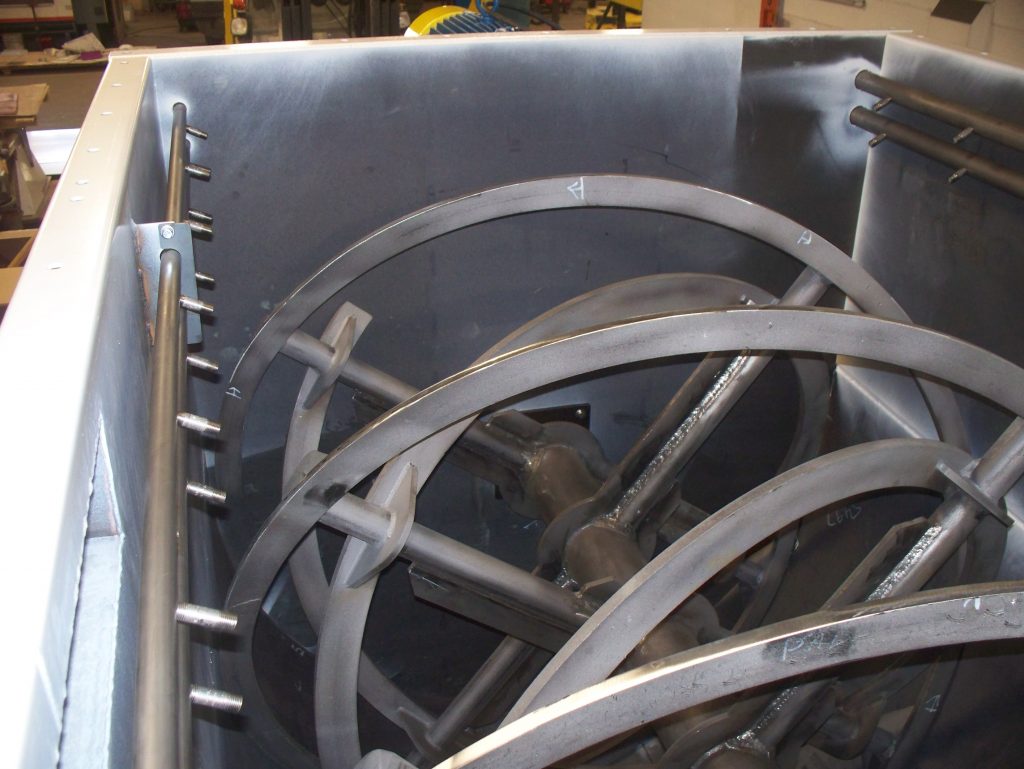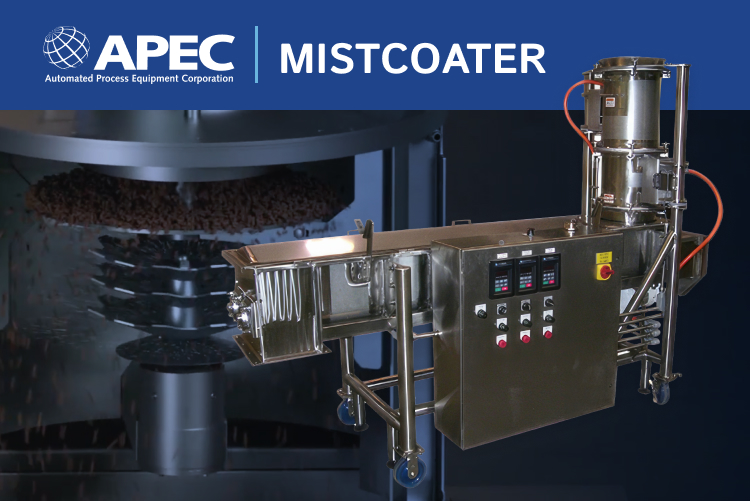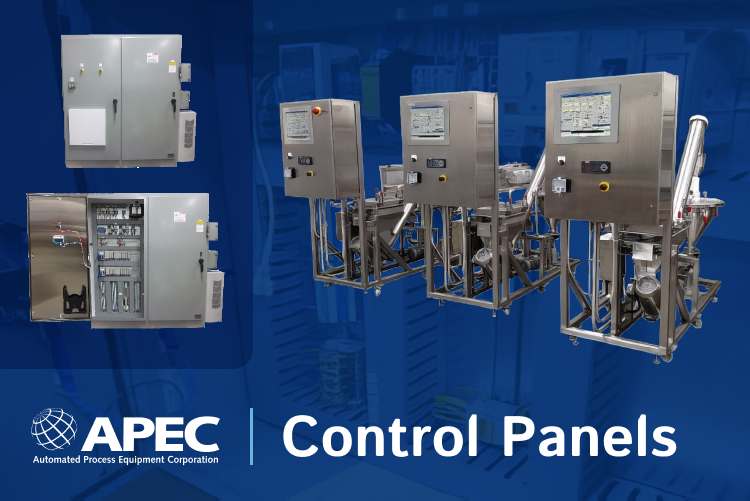
Producing high-quality finished products from dry solids starts with getting the right mix. Dry mixing machines are not one-size-fits-all, and your batch mixing system must be designed with your ingredients, facility, capacity, and other considerations in mind. Without the right mixer, segregation problems, dead zones, an low mixing activity can cause harm to your product. Go through this list of batch mixing system design considerations when working with horizontal ribbon mixers or other dry solids mixers and make sure your mixer works at optimal efficiency.
18 Batch Mixing System Design Considerations
Individual Batch Mixer Design Considerations
1. Capacity: One of the most important batch mixing system considerations for dry goods is capacity. When working with a ribbon or paddle mixer, the total capacity cannot exceed swept volume (space occupied by the ribbon mixer). Over and under filling can increase the variation in the mix and may also increase the mix time.
2. Time: Many batch mixing systems for dry solids use horizontal ribbon mixers because of their ability to fully mix ingredients in one to two minutes. However, the ideal cycle time for your food processing equipment will depend on the upstream and downstream processes, and the output you wish to achieve. Changing the capacity, profile, or number of mixers in your batch mixing system can help you coordinate timing between processes so all the systems can run simultaneously, maximizing utilization.
3. Mixing Cycles: A rule of thumb for horizontal batch mixers is that the ingredients should move from end to end at least three times. The actual required mix time can vary depending on the ingredients. Not enough circulation will give you an incomplete mix, too much circulation can cause unnecessary breakage or fines generation. Your particular mix should be checked to make sure that you have a complete mix.
4. Mixer Profile: Since ingredients in a horizontal ribbon mixer or paddle mixer move horizontally through the mixer, a longer mixer will lengthen the cycle time. In general, the diameter to length ratio should be between two and two and a half. You’ll need to consider the available footprint and desired production rates to determine the size of the mixer.
5. Motor Horsepower: Ingredient density and capacity will affect the horsepower required for the food processing equipment to run. If the weight is the same, the horsepower requirements will also be the same. However, a low-density mixture might completely fill the mixer but impose only half the weight, while a high-density mixture at full capacity will weigh much more. Choose your motor in your batch mixing system carefully so your mixer has enough power, but isn’t pulling unnecessary energy.
Material Considerations
6. Friability: Horizontal ribbon mixers generally impose a low degree of force on ingredients, but especially friable ingredients can still break apart during mixing. When working with especially friable ingredients in your batch mixing system, paddle mixers may be preferred for a gentler mixing action. The angle of the paddles will also lessen the force of the mixer.
7. Heat and Shear: Ingredients with high shear sensitivity will be subject to heat from the friction of the mixer. If these ingredients have high fat or sugar content, as well as high shear sensitivity, they may melt and stick to the mixer. Sticking ingredients will not only affect the quality of the mix and efficiency of the food processing equipment, but it will also damage the mixer over time. A non-stick coating or stainless steel polish can prevent sticking due to shear sensitivity.
8. Material Bulk Density: To properly calculate capacity, you will need to know the bulk density of all ingredients you’re currently using or expect to use in the future. Keep in mind that low-density ingredients like wheat middlings will take up more space than the same weight of another, denser ingredient like soybean meal.
Maintenance and Safety
9. Ribbon Maintenance: Mixer ribbons can last the lifetime of the mixer, but materials that are abrasive will cause a ribbon to wear down faster. Check the mixer ribbon clearance and thickness at regular intervals. Replace a ribbon before it becomes thin enough to break or the clearances between the ribbon and trough become too large. This will avoid unexpected downtime in your batch mixing system.
10. Motor Maintenance: If you are using a chain and sprocket mechanism to reduce RPMs, you will need to regularly adjust the tension and check the oil bath lubrication system. Using a shaft mount reducer can eliminate the need for this extra maintenance.
11. Safety: If adding ingredients manually to the batch mixing system, the input should be blocked with a bolted grate. Unblocked inputs or removable grates put workers at risk and expose businesses to unnecessary liability. Cultivate a culture of safety and encourage workers to report any maintenance issues or hazards.
Overall Batch Mixing System Considerations
12. Discharge Gate: Several discharge gate options are available depending on your ingredients and downstream processes. A drop bottom gate will release the entire mixture at one time, which is ideal for moving the ingredients fast. However, drop bottom gates must be tightly sealed and seals must be regularly checked to prevent leaks. Slide gates require less stringent seals and hold adjustment better, but they won’t discharge as quickly. Butterfly valves can move product quickly and will require less maintenance, but they can create dead zones over the valve.

13. Downstream Processes: Even if your horizontal ribbon mixer or another batch mixer is completely effective, material segregation can occur at any point in the process. Place your mixer as close to extrusion, pelleting, packaging, or another finishing process as possible to limit the opportunities for material segregation to occur. When working with very fine ingredients, make sure powder flow control problems upstream around a hopper or feeder aren’t affecting the batch mixing system.
14. Number of Mixers: Two small mixers may be a better option than one big one. This depends on physical space available and whether a surge hopper is possible in the system. If two mixers are used, then a mixer problem will decrease the output by fifty percent instead of shutting you down
Testing and Verification
15. Testing: Ask your manufacturer about an on-site ingredient test with your mixer to make sure there are no problems and address any concerns. Test the ingredients at the end to verify the entire process, and immediately after mixing to verify the mixer itself. You may wish to use chemical analysis to test for particular ingredient distribution or micro tracers to test without a lab.
16. Dead Zones: dead zones can form if the mixer is improperly filled (too much or not enough), and can sometimes form in the upper corner of the mixer. Test these areas to ensure dead zones aren’t disrupting the mix.
17. Ribbon Testing: As the ribbon wears down, it will require more time to completely mix all ingredients. If your coefficient of variation has steadily deteriorated, a worn-down ribbon may be the cause. Test your product regularly to avoid this problem.
18. Multiple Formulas: If your batch mixing system is dedicated to a single formula, you’re less likely to run into surprises or problems. However, if multiple different mixtures move through the system, you’ll need to separately calculate bulk density, shear sensitivity, friability and other aspects. A horizontal ribbon mixer or batch mixing system that works optimally for one recipe might not work for another. The solution may be as simple as increasing the mix time for some formulas or decreasing or increasing the batch weight to optimally fill the mixer.
The right batch mixing system design and the right dry solids mixer can reduce downtime, increase efficiency, and eliminate costly maintenance expenses with your food processing equipment. When designing a batch mixing system, work with your food processing manufacturer to find the right size, volume, power, and design for your materials, facility and process.








2 thoughts on “18 Batch Mixing System Design Considerations for the Best Dry Solids Mix”
Comments are closed.